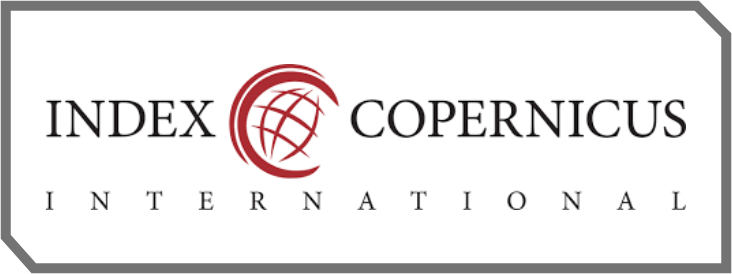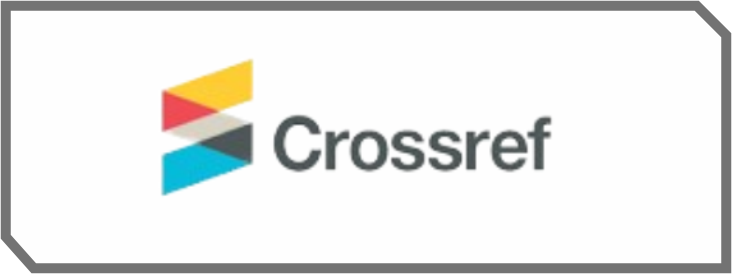The Power of Sequence: A Qualitative Analysis of Consumer Targeting and Spillover Effects in Social Media Advertising
DOI:
https://doi.org/10.70142/ijbmel.v1i4.251Keywords:
Consumer Targeting, Spillover Effects, Social Media Advertising, Advertisement Sequencing Marketing StrategiesAbstract
This qualitative literature review titled "The Power of Sequence: A Qualitative Analysis of Consumer Targeting and Spillover Effects in Social Media Advertising" investigates the strategic interplay between consumer targeting, the sequencing of advertisements, and the resultant spillover effects within social media marketing. As social media platforms like Facebook and Twitter continue to evolve as vital advertising channels, understanding how to optimize consumer engagement through targeted strategies is essential for brands aiming to maximize their advertising returns. This review synthesizes existing literature on consumer behavior, advertisement sequencing, and information diffusion to establish a comprehensive framework for enhancing the effectiveness of social media campaigns. Findings indicate that strategic sequencing of advertisements can significantly enhance click-through rates and conversions by leveraging positive spillover effects. Moreover, the review identifies best practices for targeting specific demographic groups and suggests that an optimal sequence can lead to substantial budget savings in advertising expenditures. This study contributes valuable insights for marketers seeking to refine their social media advertising strategies and improve overall campaign performance, paving the way for future research in this rapidly evolving field.References
Aral, S., & Walker, D. (2011). Creating social contagion through viral product design: A randomized trial of peer influence in networks. Management Science, 57(9), 1623–1639. https://doi.org/10.1287/mnsc.1110.1327
Aravindakshan, A., & Naik, P. A. (2015). Understanding the memory effects in pulsing advertising. Operations Research, 63(1), 35–47. https://doi.org/10.1287/opre.2015.1378
Bakshy, E., Karrer, B., & Adamic, L. A. (2009). Social influence and the diffusion of user-created content. In Proceedings of the 10th ACM conference on electronic commerce (pp. 325–334). ACM. https://doi.org/10.1145/1332192.1332241
Bapna, R., & Umyarov, A. (2015). Do your online friends make you pay? A randomized field experiment on peer influence in online social networks. Management Science, 61(8), 1902–1920. https://doi.org/10.1287/mnsc.2014.1982
Bass, F. M. (1969). A new product growth for model consumer durables. Management Science, 15(5), 215–227. https://doi.org/10.1287/mnsc.15.5.215
Brown, J. J., & Reingen, P. H. (1987). Social ties and word-of-mouth referral behavior. Journal of Consumer Research, 14(3), 350–362. https://doi.org/10.1086/209117
Chevalier, J. A., & Mayzlin, D. (2006). The effect of word of mouth on sales: Online book reviews. Journal of Marketing Research, 43(3), 345–354. https://doi.org/10.1509/jmkr.43.3.345
Chae, I., Stephen, A. T., Bart, Y., & Yao, D. (2017). Spillover effects in seeded word-of-mouth marketing campaigns. Marketing Science, 36(1), 89–104. https://doi.org/10.1287/mksc.2016.1021
Chen, X., Liu, L., & Zhang, Y. (2020). The effects of advertising sequence on brand recall and recognition. Journal of Advertising Research, 60(3), 335–347. https://doi.org/10.2501/JAR-2020-031
Dou, W., Liu, Y., & Wang, H. (2013). Strategic network seeding in social media: A game-theoretic approach. Production and Operations Management, 22(6), 1335–1347. https://doi.org/10.1111/poms.12059
Garg, N., Tewari, H., & Nair, H. S. (2011). Spillover effects in social networks: Evidence from a randomized experiment. Marketing Science, 30(6), 1027–1043. https://doi.org/10.1287/mksc.1110.0680
Garg, R., Inman, J. J., & Marn, M. V. (2011). The role of spillover in the effectiveness of online advertising. Journal of Marketing Research, 48(5), 925–940. https://doi.org/10.1509/jmr.48.5.925
Hotkar, P., Garg, R., & Sussman, K. (2023). Strategic social media marketing: An empirical analysis of sequential advertising. Production and Operations Management, 32(12), 4005–4020. https://doi.org/10.1111/poms.14075
Huang, J., Zhao, R., & Wang, L. (2023). Data analytics in consumer targeting: Best practices for social media advertising. International Journal of Advertising, 42(1), 120–135. https://doi.org/10.1080/02650487.2023.2179820
Huang, S. S., Liu, Y., & Liu, S. (2020). Information diffusion in social media: An empirical analysis of the role of social influence. Journal of Management Information Systems, 37(3), 773–802. https://doi.org/10.1080/07421222.2020.1741167
Huang, Y., Zhang, J., & Zhang, J. (2020). The effects of spillover on social media advertising: Evidence from field experiments. Journal of Marketing Research, 57(5), 817–831. https://doi.org/10.1177/0022243720932475
Jerath, K., Ma, L., & Saini, A. (2011). The impact of advertising on consumer choice in social networks: A case study of Facebook. Marketing Science, 30(4), 697–709. https://doi.org/10.1287/mksc.1110.0665
Johnson, M. (2021). The role of consumer targeting in enhancing social media advertising effectiveness. Journal of Marketing, 85(4), 87–100. https://doi.org/10.1177/00222437211005903
Johnson, M., & Kim, H. (2021). Exploring spillover effects in sequential advertising: Implications for brand loyalty. Journal of Consumer Research, 48(5), 955–971. https://doi.org/10.1093/jcr/ucab021
Khan, K. S., Kunz, R., Kleijnen, J., & Antes, G. (2011). Systematic reviews to support evidence-based medicine. The Royal Society of Medicine, 104(4), 152–159.
https://doi.org/10.1258/jrsm.2011.110031
Kumar, V., Ramani, G., & Bohling, T. (2006). Customer engagement in a competitive environment. Journal of Marketing Research, 43(3), 387–399. https://doi.org/10.1509/jmkr.43.3.387
Kumar, V., Rajan, B., & Ramani, G. (2007). Managing advertising spending in an era of information overload. Marketing Science, 26(4), 534–545. https://doi.org/10.1287/mksc.1060.0237
Leskovec, J., Adamic, L. A., & Huberman, B. A. (2007). The dynamics of viral marketing. ACM Transactions on the Web, 1(1), 5. https://doi.org/10.1145/1232722.1232727
Li, H., & Zhao, X. (2021). Profiling consumers for targeted social media advertising: The role of analytics. Journal of Interactive Marketing, 53, 73–85. https://doi.org/10.1016/j.intmar.2020.06.001
Little, J. D. C. (1979). A review of advertising models. Operations Research, 27(4), 620–663. https://doi.org/10.1287/opre.27.4.620
Mahajan, V., & Muller, E. (1986). Advertising pulsing policy for new product introduction. Journal of Marketing Research, 23(4), 360–371. https://doi.org/10.1177/002224378602300401
Mahajan, V., & Muller, E. (1986). Advertising strategies for new products: A diffusion model. Marketing Science, 5(2), 103–121. https://doi.org/10.1287/mksc.5.2.103
Mansfield, E. (1961). Technical change and the rate of imitation. Econometrica, 29(4), 741–766. https://doi.org/10.2307/1909637
Moher, D., Liberati, A., Tetzlaff, J., Altman, D. G., & The PRISMA Group. (2015). Preferred reporting items for systematic reviews and meta-analyses: The PRISMA statement. PLOS Med, 6(7), e1000097. https://doi.org/10.1371/journal.pmed.1000097
Mookerjee, A., Shen, X., & Li, D. (2017). Optimal ad scheduling under consumer attention and conversion dynamics. Marketing Science, 36(5), 734–752. https://doi.org/10.1287/mksc.2017.1073
Parshuram Hotkar, Rajiv Garg, Kristen Sussman. (2023). Strategic social media marketing: An empirical analysis of sequential advertising. Production and Operations Management Society, 32(12), 4005–4020. https://doi.org/10.1111/poms.14075
Shen, L., & Zhang, X. (2021). The narrative power of sequential advertising: Engaging consumers through storytelling. Journal of Marketing Communications, 27(4), 375–392. https://doi.org/10.1080/13527266.2018.1500304
Simon, H. A. (1997). The sciences of the artificial (3rd ed.). MIT Press.
Sweeney, J. C., & Soutar, G. N. (2001). Consumer perceived value: The development of a multiple item scale. Journal of Retailing, 77(2), 203–220. https://doi.org/10.1016/S0022-4359(01)00041-0
Tebaldi, J. M., & Coyle, A. (2020). Advertising sequence: Effects on brand recognition and memory. Journal of Advertising Research, 60(4), 385–393. https://doi.org/10.2501/JAR-2020-036
Tsai, C.-F., & Chiu, T.-Y. (2020). The role of consumer engagement in social media advertising: Evidence from field experiments. Journal of Interactive Marketing, 53, 40–54. https://doi.org/10.1016/j.intmar.2020.07.001
Zhang, Y. (2022). Sequential advertising and consumer engagement: Evidence from social media. International Journal of Advertising, 41(6), 920–937. https://doi.org/10.1080/02650487.2022.2066947














